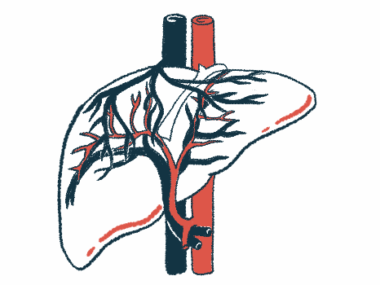Blood protein predicts post-transplant liver fibrosis in biliary atresia
M2BPGi levels predicted moderate scarring better than other standard markers
Written by |

A blood test that measures the levels of the M2BPGi protein accurately predicts the presence of moderate liver scarring, or fibrosis, in children and adolescents with biliary atresia following a living donor liver transplant (LDLT), a study reports.
M2BPGi levels predicted post-transplant liver fibrosis more accurately than other standard noninvasive blood tests.
“These results suggest that M2BPGi is a promising tool for identifying LDLT recipients with advanced [transplanted liver] fibrosis that cannot be detected by routine blood examination,” the researchers wrote in “Clinical Implications of Serum Mac-2 Binding Protein in Patients After Living Donor Liver Transplantation for Biliary Atresia,” which was published in Transplantation Proceedings.
Bile is a digestive fluid produced in the liver that flows through tubes called bile ducts into the intestines. In biliary atresia, a rare liver disease that affects infants, the bile ducts are blocked or absent, causing bile to build up in the liver.
First-line treatment is a Kasai portoenterostomy, a surgical procedure to reestablish bile flow out of the liver. Several biliary atresia patients still develop liver damage over the long term, such that a liver transplant becomes necessary.
LDLT “has become the definitive treatment for children with [liver failure] in the setting of insufficient [deceased] donors,” the researchers wrote, noting biliary atresia was “the major indication for LDLT among pediatric patients.”
After a transplant, the health of the new liver, called a graph, is monitored with standard blood tests for liver function. Abnormal changes, such as fibrosis, can develop even if liver function tests stay normal. For this reason, a liver biopsy is necessary to detect fibrosis after a transplant.
Because a liver biopsy is a painful and invasive procedure that increases the risk of organ injury and bleeding, accurate noninvasive biomarkers to detect post-transplant liver fibrosis are needed.
Predicting liver fibrosis in biliary atresia
Studies have suggested M2BPGi protein levels in the blood may predict liver fibrosis in biliary atresia. Here, researchers in Japan analyzed blood and liver biopsy samples from 56 biliary atresia patients who had an LDLT at the Osaka University Graduate School of Medicine, Japan to see if M2BPGi levels can predict liver fibrosis after an LDLT. The patients were a median age of 4.3 (range, 0.6-18.9) when they had the transplant and were followed for a median of 8.6 years, with a liver biopsy performed at a median of 10.5 years.
According to the latest biopsy, seven patients (12%) had no signs of liver fibrosis, 36 (64%) had mild fibrosis, and 13 (23%) had moderate fibrosis.
Blood tests showed M2BPGi levels were significantly higher in those with moderate fibrosis than those with no or mild fibrosis. Blood M2BPGi levels “increase in stages as graft liver fibrosis progresses,” the researchers wrote.
When they analyzed four standard blood markers for liver fibrosis, the researchers found that only the mean FIB-4 index was significantly higher in those with moderate liver fibrosis versus those without it. The index considers age, liver enzyme levels, and the number of platelets, the tiny cell fragments in blood that promote clotting. None of the three other markers — type 4 collagen 7s, hyaluronic acid, and aspartate aminotransferase to platelet ratio index — correlated with fibrosis severity.
The researchers then compared M2BPGi levels among the 51 patients without portal vein (PV) complications and the five patients with such complications, which consisted of either stenosis or thrombosis. PV stenosis is marked by the narrowing of the portal vein, which carries blood from the digestive system to the liver, while PV thrombosis refers to its blockage from blood clots. Both can contribute to graft failure.
M2BPGi levels were higher in those with post-transplant PV complications than in those without, such that a specific cutoff value predicted such issues with 96% accuracy.
In those without PV complications, mean M2BPGi levels were higher in those with moderate fibrosis than those without fibrosis and with mild fibrosis.
With a cutoff value of 0.94 mg per liter of blood, M2BPGi levels could predict moderate liver fibrosis in those without PV complications after LDLT with an accuracy of 78%. This was higher than all other standard fibrosis markers evaluated in the study.
“We found that [blood] M2BPGi levels in patients who have undergone LDLT for BA [biliary atresia] are correlated with the stage of fibrosis as assessed by liver biopsy,” wrote the researchers, who said the levels have “better ability to detect fibrosis in grafts with [moderate] fibrosis than other conventional [blood] biomarkers.”
“We suggest M2BPGi measurement once every [three] months for patients after liver transplantation. If M2BPGi levels are elevated with normal liver function, a per-protocol liver biopsy and ultrasound examination should be performed,” said the researchers, who called for more research into the relationship between M2BPGi levels and fibrosis progression.






